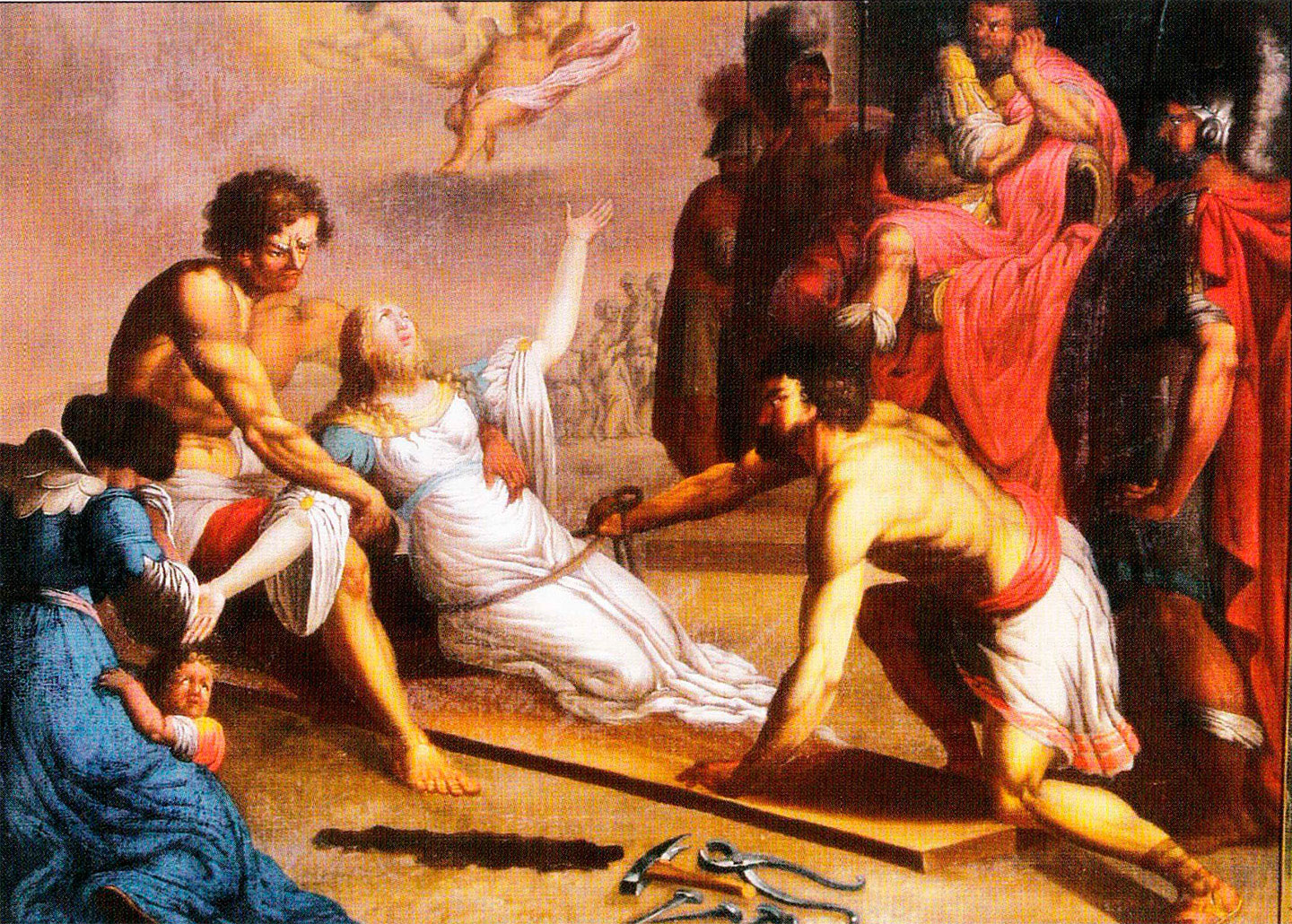Grace Lee Boggs, The Next American Revolution: Sustainable Activism for the Twenty-First Century (University of California Press, 2011), 79.
Ilse E. Friesen, The Female Crucifix: Images of St. Wilgefortis Since the Middle Ages (Wilfred Laurier University Press, 2001), 107.
Another purported origin of Wilgefortis’s cult is that she was confused with the Volto Santo, a Roman Catholic crucifix of Jesus Christ dressed in regalia, including a dress-like gown.
It should be noted that some of these accounts specifically identify the suitor as Muslim. Wilgefortis’s refusal and commitment to Christian purity has thus also been subject to Islamophobic and potentially racist interpretation.
“By the directives of Sacrosantum Concilium of Vatican II (1963), in which one can find the statement that ‘incongruous’ practices may ‘foster devotion of doubtful orthodoxy.’ Zealous efforts, both before and following these new directives, resulted in numerous churches being stripped of any traces of the former veneration of the crucified female saint—often to the pride of certain clerics, but to the regret of numerous parishioners and visitors.” Ilse E. Friesen, The Female Crucifix: Images of St. Wilgefortis Since the Middle Ages (Wilfred Laurier University Press, 2001).
Friesen, The Female Crucifix, 94.
Caroline Walker Bynum, “The Female Body and Religious Practice in the Later Middle Ages,” in Fragments for a History of the Body: Part I, ed. Michel Feher (Zone Books, 1989).
Mark Albert Johnston, Beard Fetish in Early Modern England: Sex, Gender, and Registers of Value (Routledge, 2016), 181.
All of this is rooted in historical and contemporary white, Eurocentric, classist, and ableist beauty standards.
Celia Kitzinger, “‘The Thief of Womanhood’: Women’s Experience of Polycystic Ovarian Syndrome,” Social Sciences and Medicine, no. 54 (2002).
Kitzinger, “‘The Thief of Womanhood.’”
Experiences of hirsutism vary regionally and culturally. My experience as a white woman living in the United States is particular. I cannot speak to the experiences of women of color and or those in different regions where culturally and religiously specific notions of beauty and femininity, along with the effects of colonialism and white supremacy, are felt on a bodily level. In an ideal future version of this text, such voices would also be included.
That said, I have been pleasantly and genuinely surprised by select lovers who have accepted and even been attracted to this aspect of my presentation. For that I am forever grateful. Those moments have yielded true intimacy and growth.
“Why did Clofullia’s Victorian American audiences respond so favorably? Partly it’s because she ‘acted’ like a nineteenth-century woman. In a society with deeply entrenched gender norms, Clofullia fit the part: She was demure, nurturing, and demonstrated excellence in needlework and other ‘feminine’ arts. In the face of all this, what was a beard?” Sean Trainor, “Lesson of the Bearded Lady,” The Atlantic, December 5, 2015 →.
PCOS affects a variety of different AFAB people regardless of race or ethnicity, and experiences may also differ based on different cultural or regional understandings of beauty standards.
Lewis Wallace, “Bearded Woman, Female Christ: Gendered Transformations in the Legends and Cult of Saint Wilgefortis,” Journal of Feminist Studies in Religion 30, no. 1 (Spring 2014): 54.
Ulrike Woerner, in conversation with the author, August 2019.
Lewis Wallace, “Bearded Woman, Female Christ: Gendered Transformations in the Legends and Cult of Saint Wilgefortis,” Journal of Feminist Studies in Religion 30, no. 1 (Spring 2014): 54.
Thank you to everyone who worked with me, talked to me and leant their stories, knowledge and thought to this ongoing exploration. I am forever grateful for your time and generosity: Aaron Kelley, Clara López Menéndez, Danielle Schwab, Rachel Smith, Ulrike Woerner, Sara Frier, Virgil Benjamin Taylor, Johanna Bampi, Robert Mills.
